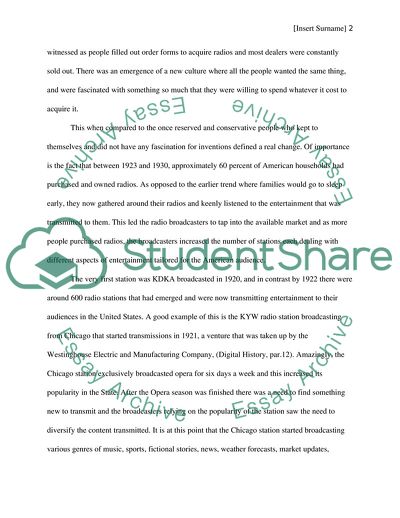Cite this document
(Effects of the Emergence of Television and Radio in America Report, n.d.)
Effects of the Emergence of Television and Radio in America Report. https://studentshare.org/history/1826923-the-early-emergence-of-radio-in-american-culture-compared-to-the-early-emergence-of-television-in-american-culture
Effects of the Emergence of Television and Radio in America Report. https://studentshare.org/history/1826923-the-early-emergence-of-radio-in-american-culture-compared-to-the-early-emergence-of-television-in-american-culture
(Effects of the Emergence of Television and Radio in America Report)
Effects of the Emergence of Television and Radio in America Report. https://studentshare.org/history/1826923-the-early-emergence-of-radio-in-american-culture-compared-to-the-early-emergence-of-television-in-american-culture.
Effects of the Emergence of Television and Radio in America Report. https://studentshare.org/history/1826923-the-early-emergence-of-radio-in-american-culture-compared-to-the-early-emergence-of-television-in-american-culture.
“Effects of the Emergence of Television and Radio in America Report”. https://studentshare.org/history/1826923-the-early-emergence-of-radio-in-american-culture-compared-to-the-early-emergence-of-television-in-american-culture.


